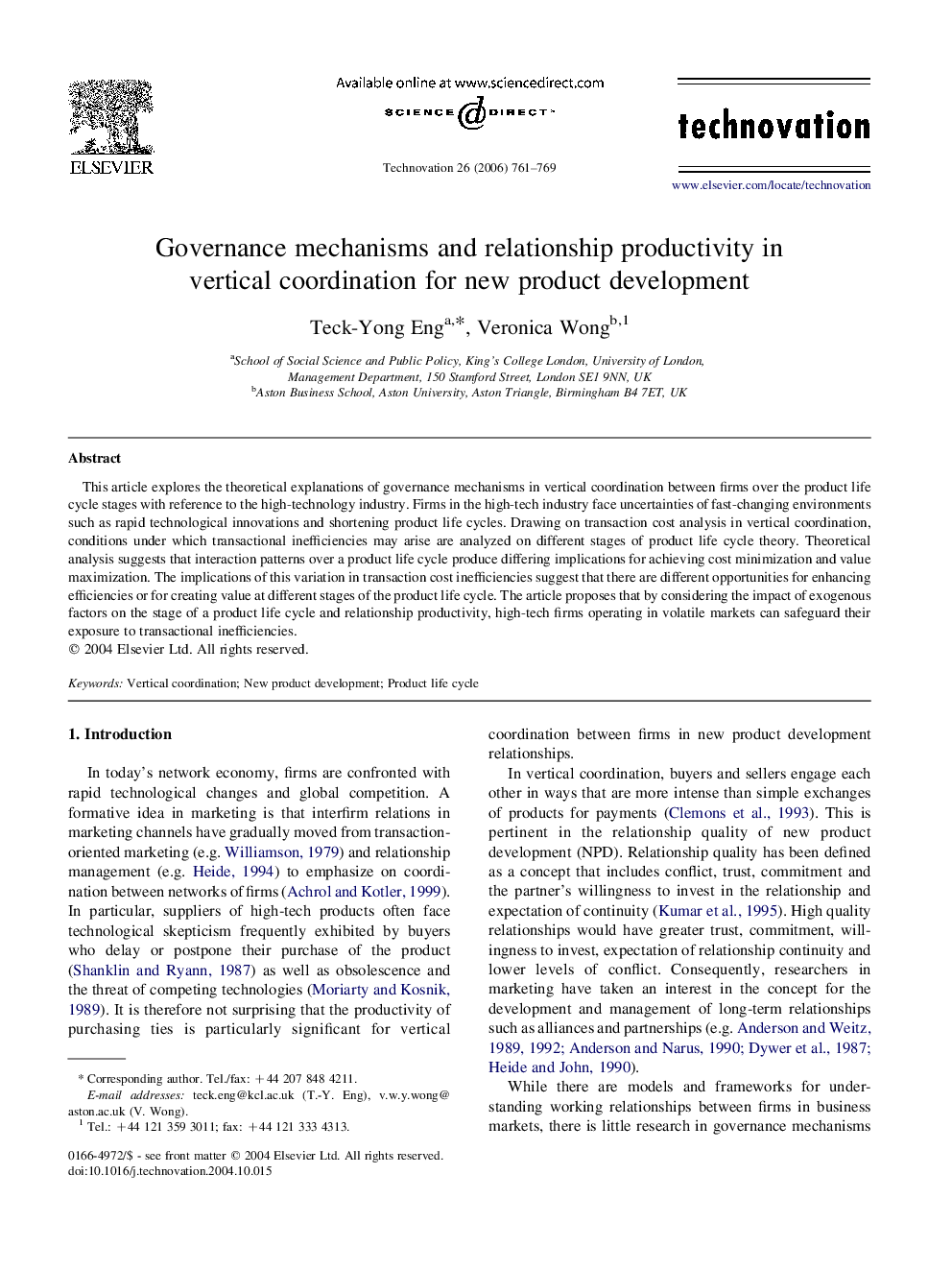| Article ID | Journal | Published Year | Pages | File Type |
|---|---|---|---|---|
| 1022755 | Technovation | 2006 | 9 Pages |
This article explores the theoretical explanations of governance mechanisms in vertical coordination between firms over the product life cycle stages with reference to the high-technology industry. Firms in the high-tech industry face uncertainties of fast-changing environments such as rapid technological innovations and shortening product life cycles. Drawing on transaction cost analysis in vertical coordination, conditions under which transactional inefficiencies may arise are analyzed on different stages of product life cycle theory. Theoretical analysis suggests that interaction patterns over a product life cycle produce differing implications for achieving cost minimization and value maximization. The implications of this variation in transaction cost inefficiencies suggest that there are different opportunities for enhancing efficiencies or for creating value at different stages of the product life cycle. The article proposes that by considering the impact of exogenous factors on the stage of a product life cycle and relationship productivity, high-tech firms operating in volatile markets can safeguard their exposure to transactional inefficiencies.
